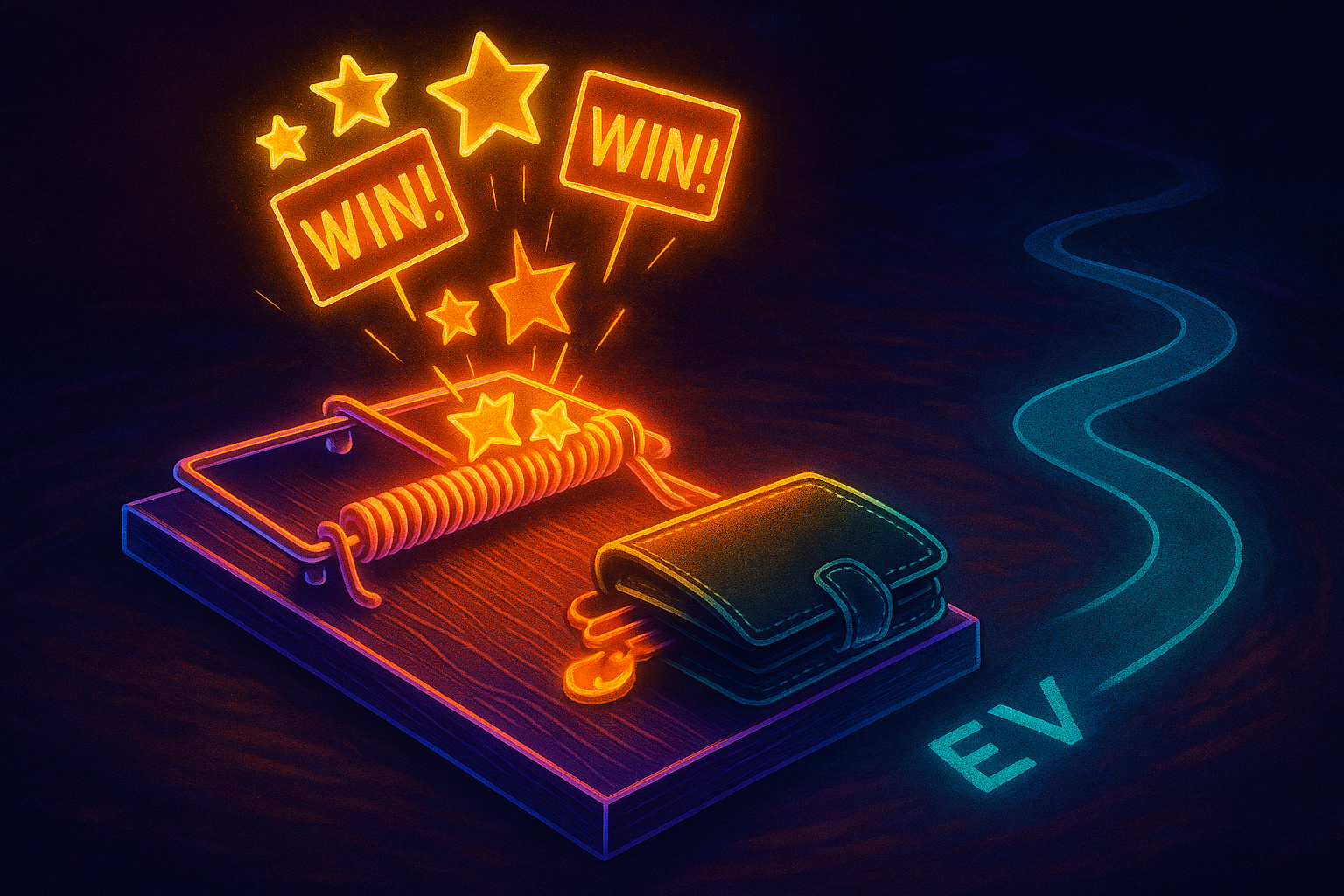Why Your Obsession With Winning Is Killing Profits
Chasing wins is killing your profits. Learn how elite bettors use expected value and a profit-first mindset to grow bankrolls and beat the market long-term.

IN THIS ARTICLE…





Table of Contents
🎭 The Expensive Illusion of a 90% Win Rate
You love to win. Everyone does. The rush of being “right,” the satisfaction of stacking green checkmarks in your betting history. It feels like proof you’re a sharp player. But here’s the brutal truth: your obsession with winning is quietly draining your bankroll.
Professional bettors and hedge fund managers share a secret that casual punters refuse to accept: a high win rate doesn’t equal high profits. In fact, some of the most profitable players in the world lose nearly half their bets – and they’re thrilled about it. Why? Because they’ve traded the emotional comfort of “winning often” for the cold, mathematical pursuit of expected value (EV).
If you’re chasing 90% win rates on low-risk bets, you’re probably leaving money on the table – or worse, guaranteeing long-term losses. In this article, you’ll discover why clinging to the illusion of consistent winning is killing your profits, and how shifting to a profit-first mindset can turn you into a true professional.
🪤 The Hidden Trap of Chasing Wins
Most bettors secretly measure success by one metric: how often they win. A 9/10 winning streak feels like mastery; a 5/10 record feels like failure. But this emotional scoreboard is a trap One that leads you to systematically pick bad bets that feel good.
Why humans equate winning with success
From childhood, we’re wired to equate winning with progress. Win the game = you’re better. Lose = you failed. In sports betting, this instinct pushes you toward “safe” bets: short odds, heavy favorites, and outcome certainty. We don’t just like winning – we’re neurologically, socially, and culturally primed to treat “being right” as success. That wiring served us in short-horizon environments but becomes costly in markets where price, probability, and variance determine outcomes.
But betting isn’t about being “right” often. It’s about being mathematically right over the long run. Professionals aren’t chasing validation; they’re chasing positive expected value (EV), even when it means embracing frequent losses.
1) Neurobiology: frequent rewards hijack the scoreboard
Dopamine prediction error: The brain reinforces actions that deliver small, frequent rewards. Short-odds favorites produce many “wins,” so your reward system tags them as “good decisions,” even if the expected value (EV) is negative.
Availability bias: Frequent green checkmarks are more salient than occasional large drawdowns, so your memory overweights the wins and underweights the true cost.
Pain asymmetry (loss aversion): The pain of visible losses is 2–3× the pleasure of equivalent gains, pushing you toward certainty-seeking. Exactly where books price a premium.
Consequence: You optimize for emotional comfort (hit rate) instead of financial expectation (EV).
2) Social status: wins are public, EV is private
Status signaling: Wins are easy to display and brag about. EV is invisible and realized slowly. Social feedback loops reward “being right” more than “buying price.”
Coalitional psychology: In group settings (forums, chats), quick wins raise perceived competence. That nudges selection toward attention-grabbing favorites and parlays.
Consequence: Reputation economics nudges you toward win-rate vanity over edge compounding.
3) Cultural conditioning: scoreboards train shortcut thinking
Sports & school: We grow up graded on outcomes (W/L, test scores), not on decision quality or calibration. Accuracy is idolized; calibration is rarely taught.
Media narratives: Broadcasts lionize streaks and “locks,” not closing line value (CLV) or fair price. The market’s X-ray never makes the highlight reel.
Consequence: We transfer a binary success model into probabilistic domains where process > outcome.
4) Cognitive economy: win rate is a cheap proxy
Metric substitution: EV requires estimation of true probabilities and prices (hard); win rate is free. Under cognitive load, the brain swaps the hard metric for the easy one.
Outcome bias: We judge a decision by its result, not by the information available at the time. A bad bet that wins gets wrongly reinforced; a great +EV bet that loses gets punished.
Denominator neglect: “9 wins, 1 loss” feels superior. Even if that one loss erases the nine small gains.
Consequence: You adopt a misleading KPI because it’s simpler to compute in real time.
5) Time horizon mismatch: short loops vs long games
Feedback timing: Win rate provides instant feedback; EV/CLV provide delayed, statistical feedback over large samples.
Variance myopia: Short horizon noise masquerades as skill or failure, pushing you to over-adjust and chase certainty.
Consequence: You abandon profitable strategies before the edge can manifest.

